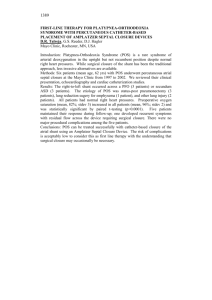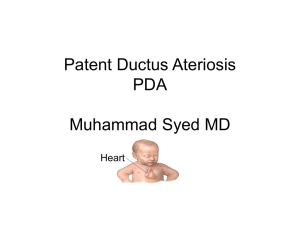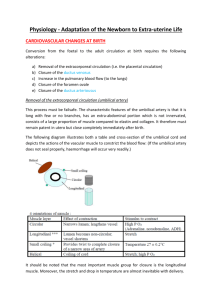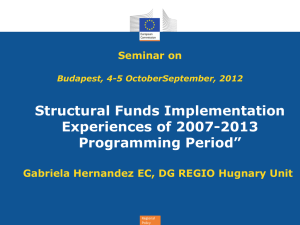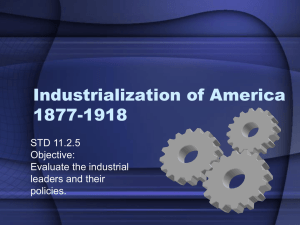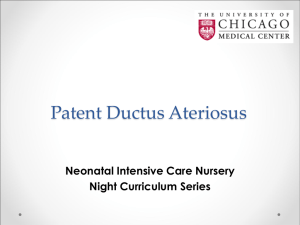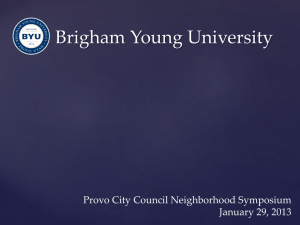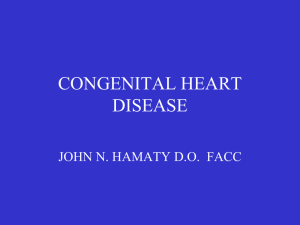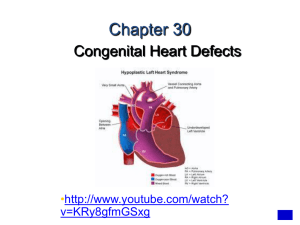Cardiology Bedside Clinics Interesting Case Discussion
advertisement
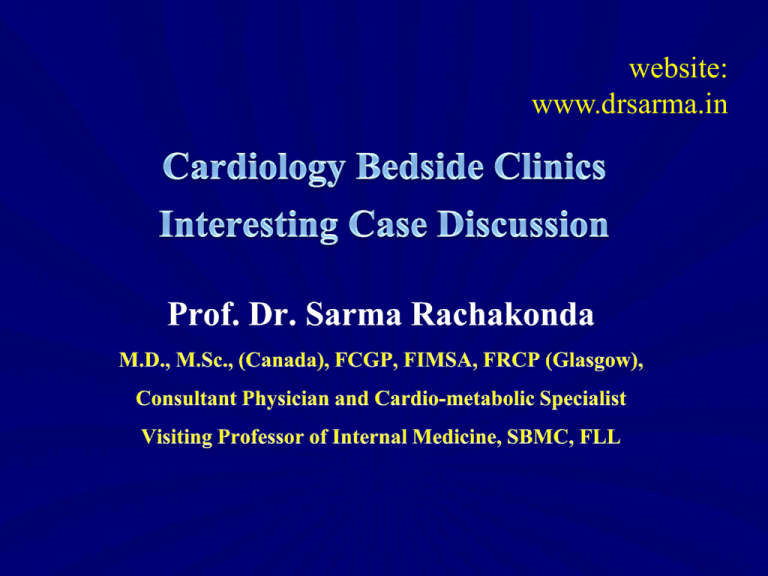
website: www.drsarma.in • 1888 – Munro – Cadaver Dissection – Ligation • 1940 – 50 years later surgical Rx. PDA closure • 1971 – Cather based closure Rx. Options Structures in close proximity to ductus • Recurrent Laryngeal nerve • Thoracic duct • Phrenic nerve • Pulmonary Vascular Resistance (PVR) • Associated Congenital Anomalies • Direction of shunt – L R or R L PVR = ( Mean pulmonary artery pressure – mean pulmonary capillary wedge pressure ) cardiac output = 1.7~2.0 mmHgL-1min or 144 dyne.sec.cm-5 • PGE2 Production by the ductus • PGE2 high levels from placenta • No clearance of PGE2 by fetal lungs • Difference in oxygen tensions • At birth – Placental supply of PGE2 is cut off • Metabolism by lungs removes PGE2 • levels of PGE2 stimulate closure of Ductus • Functional Closure – Occurs with in 15 hours after birth • Anatomical Closure – Takes place with in 6 to 8 weeks • Spontaneous closure after birth – Can occur up to 2 years • Best time for surgical closure – 3 years of age Patent ductus arteriosus (PDA) is a congenital heart disease that is usually noted in the first few weeks or months after birth. It is characterized by a connection between the aorta and the pulmonary artery, which allows oxygen-rich blood intended for systemic circulation to reenter the lungs • • • • • • • • • Prematurity < 32 weeks – 20%; < 28 weeks 60% Low birth weight Maternal Rubella Fetal Alcoholic Syndrome (FAS) Asphyxia around term and delivery Familial or Genetics 5 to 10% of all C.H.Ds Approximate incidence – 0.02% to 0.0006% Gender: Male v/s Female – is 1:2 Location of PDA • Usually left side • Occasionally right side • From the bifurcation of PA to • The descending part of Aortic Arch • Distal to the origin of the Lt. subclavian A • Embryologically it is from 6th aortic arch • http://www.indiana.edu/~anat550/cvanim/f etcirc/fetcirc.html A Conical B Window C Tubular D Complex E Elongated 20% by 20 years of age 45% by 45 years of age 60% by 70 years of age • • • • • • • • • Effort intolerance Pulmonary congestion CHF in adults Arrhythmias in adults Wide pulse pressure Collapsing pulse Hyper dynamic apex Displaced apex – LVH Differential cyanosis • • • • • • • • • S1 and S2 muffled Paradoxical split of S2 Precordial thrill SS notch, 2nd Lt. space Continuous murmur Machinery murmur Train in tunnel murmur Gibson’s murmur Respiratory variation Congenital, Developmental Disorders • Patent ductus arteriosus • Coronary arteriovenous fistula • Anomalous origin coronary artery/sinus • Aortic septal defect / window Anatomic, Foreign Body, Structural Disorders • Sinus of Valsalva ruptured aneurysm • Pulmonary arteriovenous fistula Functional, Physiologic Variant Disorders • Cervical venous hum, Mammary soufflé Right to Left Left to Right Direction of shunt depends on pressures 1. 2. 3. 4. 5. Effort intolerance Signs of PHT and Right heart overload Differential cyanosis Clubbing Disappearance of diastolic component of the continuous murmur 6. Pulse no more collapsing 7. Syncope is not a feature of PDA • • • • • May be normal ECG LVH may be seen Pulmonary hypertension ST-T changes due to LV strain RVH, RAE may be seen Available in boxes of 5 vials/ampules Cost per vial Rs. 2500 – 3200 500 mcg drug in one ml vial – dilute with 49 cc D5 Standard concentration 10 mcg/ml (NEOFAX) or (PROSTIN) 0.05-0.2 mcg/kg/min IV 1. Spontaneous closure (with in 2 years) 2. If symptomatic treatment is prudent a) systemic O2 delivery b) Respiratory distress 3. Medical management a) b) c) d) IV Indomethacin (Indocin) 0.2mg/kg x 3 -12 hourly IV Ibuprofen (NeoProfen) 10 mg/kg – 5mg/kg Bacterial Endocarditis prophylaxis, Antibiotics Diuretics/ Digoxin – BNP guided Rx. 4. Catheter based closure of PDA a) Gainturco – Spring Occluding Coils b) Amplatzer Duct Occluder – ADO I & ADO II c) Rashkind Duct Occluding Device – RDOD 5. Surgical closure a) Ligation and Division – L&D – Open surgery b) Video Assisted Thoracoscopic Surgery (VATS) •Ideal age for surgical / device closure – 3 yrs. •Contraindication – Any disease of pulm. valve • Age more than 3 years • Children less than who are symptomatic • Significant left-to-right shunt suggested by – Symptomatic – effort intolerance, recurrent LRI, – e/o left-sided volume overload, LVH, LAE – Reversible pulmonary arterial hypertension (PAH) • Irreversible pulmonary vascular disease (Eisenmenger syndrome) – e/o shunt reversal • Other associated congenital heart diseases 1. Echocardiography of PDA 2. Devise closure of PDA 3. Surgical closure of PDA Click on the enclosed video files in the folder
